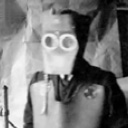- Home
- Products
- Resources
- About Us
- Core Material
- Contact Us
 Loading
Loading
 Loading
Loading

The previous two Understanding Lead Aprons articles appearing in Spectrum have provided readers with background technical information to enable a good understanding of:
In this article, the key issue of weight versus protection for lead aprons will be scrutinised with the benefit of knowledge gained from the above, enabling some interesting facts to emerge from a wealth of sometimes misleading manufacturer’s marketing claims.
The weight of a garment is determined by three physical attributes: the type of core material used, the thickness of the core material and the surface area of the garment.
The types of core material can be loosely divided into lead based, and non- or low-lead based materials. It has been explained how results determined according to the current AS/NZS standard with the narrow beam method do not accurately reflect the true protective abilities of the non- or low-lead core materials, with their results appearing to show better protective abilities for a given mass than the lead based materials. So, what follows, core material from a range of lead aprons produced by different manufacturers has been analysed for weight, and for lead equivalence using the inverse broad beam method to enable a true comparison of weight characteristics for a given level of protection.
The lead equivalence for a range of lead based materials has been determined, along with the mass per unit area of the material. These measurements have been normalised to a calculated mass per unit area corresponding to a 1 mm lead equivalence in each case, and the results are shown in figure 1 below.

Within a few percent either way, a 1 mm Pb equivalence requires a material weighing on average 1.36 g/cm2 (the full range observed is from 1.33 to 1.41 g/cm2). As a point of reference, pure lead has a density of 11.34 g/cm3, and so a 1 mm thickness of pure lead weighs 1.134 g/cm2. The increase in weight in the core materials from this value is due to the plastisol or rubber substrate material, which necessarily adds weight, but unfortunately, very little protection.
The variations in weight observed above are due to variations in the ratios of lead powder added to the substrate material. Ideally the maximum amount of lead possible should be added to the substrate material subject to not compromising the flexibility, structural integrity, or lifespan of the final product.
The lead equivalence for the non- and low-lead based materials has similarly been determined, along with the mass per unit area of the material. As discussed in an earlier article, the lead equivalence of non-lead materials has an energy dependence, and the data below is taken from a series of measurements at 90 kVp. This was chosen as an energy towards the higher end of what is typically encountered in fluoroscopic procedures, and a point where adequate lead equivalence is important. These measurements have been normalised to a calculated mass per unit area corresponding to a 1 mm lead equivalence in each case, and the results are shown in Figure 2 below.

and the data below is taken from a series of measurements at 90 kVp. This was chosen as an energy towards the higher end of what is typically encountered in fluoroscopic procedures, and a point where adequate lead equivalence is important. These measurements have been normalised to a calculated mass per unit area corresponding to a 1 mm lead equivalence in each case, and the results are shown in Figure 2 below.
Whilst there is a wider variation in the mass required to achieve 1 mm lead equivalence across the core material types, a 1 mm Pb equivalence at 90 kVp requires a material weighing on average 1.29 g/cm2 (the full range observed is from 1.22 to 1.43 g/cm2).
The wider variation in the weights observed here relative to the lead based materials is due to the variety of attenuation materials in use (typically mixtures comprised from tin, antimony, barium, tungsten, lead or bismuth).
The key message from the above data is that although the non-lead materials do provide equivalent protection at 90 kV for a reduced weight, it is only a marginal reduction of about 5 % on average. Further, this is at 90 kV where the non-lead materials perform best. The data at 110 kV shows that the lead based, and non- or low-lead based are equivalent to within several percent in terms of weight for a given level of protection.
Importantly, the data shown above is for conventional non- or low-lead based materials comprised of homogenous mixtures of elements. The layered materials that are available perform better because the low energy fluorescence x-rays are blocked by the second layer of lead or bismuth. Only one brand of bi-layered material has been available to test for this work, and the results show that 1 mm of Pb equivalence can be achieved at a weight of 1.16 g/cm2, which is a 15 % improvement over the lead based materials.
Putting aside the physics considerations of radiation attenuation, the weight of a garment is also directly related to the amount of material required to construct it. So, reductions in over-all weight can be achieved by, for example, increasing the gap around the armhole, or reducing the extent of overlap in a double-breasted style vest or apron, where both layers are required to achieve the stated lead equivalence, or by shortening a vest, allowing for the possibility of exposure to the waist area between the vest and the skirt. These are obviously all detectable short-comings of a garment design, and the consumer should be diligent in ensuring staff are properly fitted for the garments they are intending to wear. The possibility of exposing sensitive tissues to un-attenuated radiation as a result of poor fitting is a very real possibility, and one that should be avoided at all costs.
Consumers should also look for features like shoulder pads and specially constructed waist support belts. Together these reduce load pressures and improve both posture and the comfort of the wearer, improving the quality of working life while maintaining the required radiation protection.
The key message from the above data is that although the non-lead materials do provide equivalent protection at 90 kV for a reduced weight, it is only a marginal reduction of about 5 % on average. Further, this is at 90 kV where the non-lead materials perform best. The data at 110 kV shows that the lead based, and non- or low-lead based are equivalent to within several percent in terms of weight for a given level of protection.
All wearers are sensitive to the weight burden when wearing a lead apron however the clear conclusion from the data presented above is that significant differentials in apron weight are likely to represent significant variations in the protection being afforded the wearer. The only exception to this being the bi-layer materials that can offer some weight reduction for comparable protection.
A translation of this conclusion is that despite the marketing hyperbole often encountered, basic physics considerations dictate that there are no “silver bullet” materials that can offer twice the protection at half the weight.
If an apron seems surprisingly light for its claimed lead equivalence, then it should be treated with caution. The key thing to check is the pedigree of the lead equivalence testing underpinning the statements made on the garment label. The testing should be done using inverse broad beam methods employed by the more recent standards, and not the narrow beam methods described in older standards.
To prioritise weight over protective abilities is to disregard the intent of the standards and regulations currently in place in Australia and New Zealand, which are all there to set minimum acceptable levels of protection for wearers. To improve the quality of working life for apron wearers, it is strongly advised that rather than seeking to source significantly lower weight garments, products which incorporate ergonomic benefits such as shoulder pads, and built-in belts should be sought to mitigate the detrimental effects of apron weight.

by Dr. Johnny Laban

by Dr. Johnny Laban

by Dr. Johnny Laban

by Dr. Johnny Laban